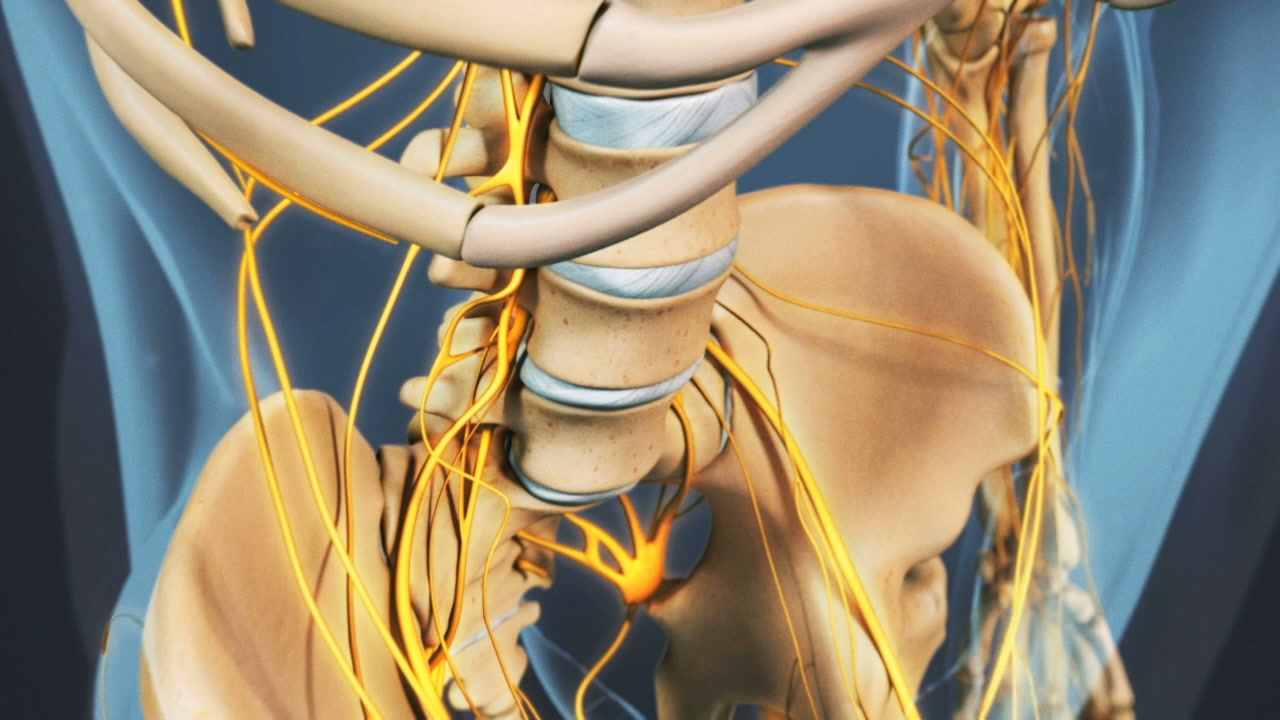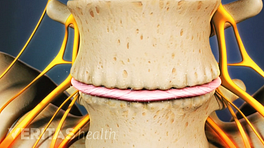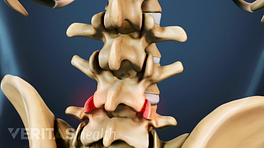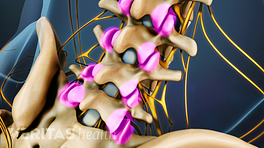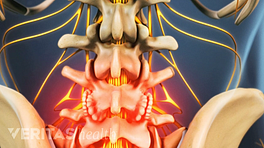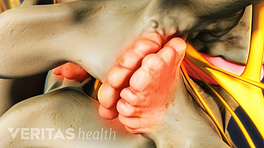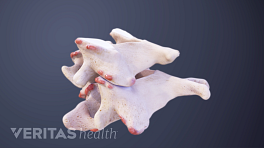Lumbar osteophytes, or bone spurs, are growths that form on the joints in the lower back as a result of degenerative changes to the spine.
As disc material or cartilage in between the bones of the spine breaks down, extra movement occurs in the joints of the spine. In order to compensate for this extra movement, the body forms bone spurs on the surfaces of the joints.
Degeneration of the spine occurs as a result of normal aging processes, but can be accelerated by poor posture, traumatic injury, or poor nutrition. Degenerative diseases such as spinal osteoarthritis and spinal stenosis may also cause bone spurs to form.
Bone spurs are actually smooth growths that do not always cause pain, but in severe cases, they can compress nerves in the lower back and cause neurological symptoms. Bone spurs are likely to cause pain when they form in the foramen, the small hole through which nerve roots exit the spine.
When a bone spur is impinging on a nerve in the lumbar spine, it can cause symptoms of radiating pain, weakness, tingling, or numbness in the legs and feet. Other symptoms of bone spurs include stiffness and lack of movement in the back, and pain that worsens with activity and improves with rest. Bone spurs have similar symptoms to other conditions, so it is important to get an accurate diagnosis from a medical professional.
In This Article:
- Bone Spurs (Osteophytes) and Back Pain
- Clinical Symptoms of Bone Spurs
- Bone Spur Causes
- Diagnosis of Bone Spurs
- Treatment Options for Bone Spurs
- Lumbar Osteophytes (Bone Spurs) Video
